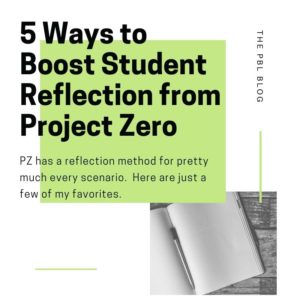 If you’re not familiar with Harvard’s Project Zero Thinking Routines Toolbox, I hope this post will convince you to take five minutes to explore their website. Reflection is a key element of project-based learning (not to mention all learning), and I’m pretty sure the PZ Thinking Routines could be a one-stop-shop for all of your reflection method needs, with dozens of unique, descriptive processes to choose from. Here are five of my favorites:
If you’re not familiar with Harvard’s Project Zero Thinking Routines Toolbox, I hope this post will convince you to take five minutes to explore their website. Reflection is a key element of project-based learning (not to mention all learning), and I’m pretty sure the PZ Thinking Routines could be a one-stop-shop for all of your reflection method needs, with dozens of unique, descriptive processes to choose from. Here are five of my favorites:
- I Used to Think…Now I Think…
When teaching students how to reflect, sometimes one of the first steps might be to provide statement starters. This method offers language for students to measure their change in thinking from one point in their learning to another. Great for an end of class exit slip.
You can read the full process here.
- Compass Points
Similar to feedback protocols, reflection sessions tend to be more robust and productive when mechanisms are in place to balance student responses. The Compass Points process divides responses into four categories corresponding to the cardinal directions: excited; worrisome; need to know; and suggestion for moving forward. Deploying Compass Points at various benchmarks in a PBL project can help in spotting red flag issues, while also reinforcing best practices and acknowledging student voices.
You can read the full process here.
- Walk the Week
It’s safe to say that we’re all spending quite a bit of time behind a computer screen at this point, so this active reflection method may get your students moving around a bit. Essentially, it’s an ongoing scavenger hunt in which students connect classroom content to the world around them; as students go about their everyday activities (taking a walk, for instance), they should aim to keep an eye out for any and all ways that their classroom learning manifests in their lived experience. This one combines reflection with a strong emphasis on real world connections.
You can read the full process here.
- 3-2-1 Bridge
Overcoming biases requires conscious reflection; if we don’t take the time to measure the change in our perspectives, would we even realize that our thinking has changed? 3-2-1 Bridge makes this process explicit by breaking the reflection session into pre- and post-exercises, requiring students to express and then bridge the difference between their thinking as it relates to a given topic over time. I recommend this method for situations where students may be entering a lesson or project with prior, deeply held opinions or biases.
You can read the full process here.
- True for Who?
What does truth look like from someone else’s perspective?
This method introduces empathy into the reflection process by asking students to explore issues from viewpoints beyond their own; in doing so, students visualize other stakeholders and the reasoning that they each might exhibit. As students gather research throughout a project, this method can slow students’ tendencies to jump to conclusions–introducing more nuance and understanding into their interpretation of information.
You can read the full process here.






